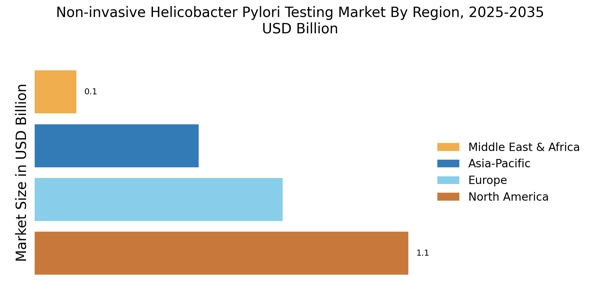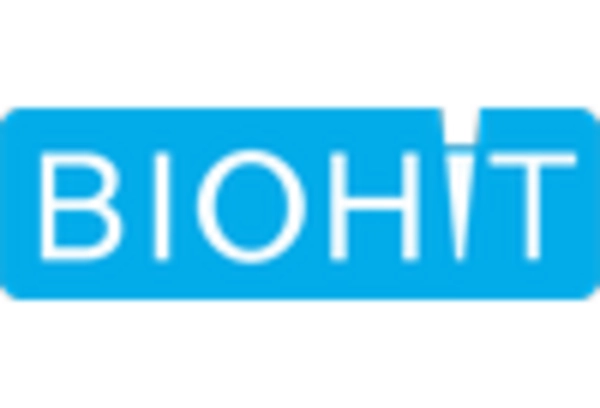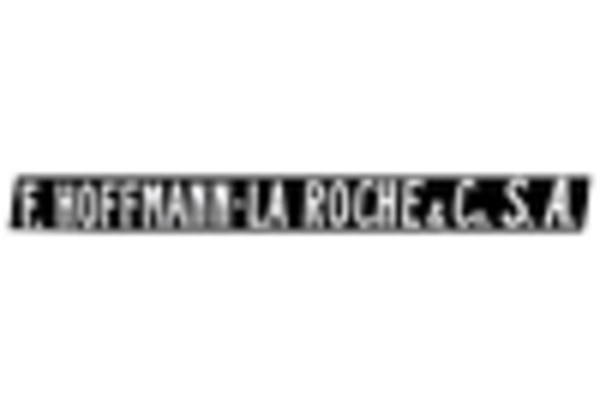The Non-invasive Helicobacter Pylori Testing Market is characterized by a diverse array of players striving to gain a competitive edge through innovative testing solutions and strategic collaborations. This market, which has gained significant traction due to the rising prevalence of Helicobacter pylori infections and the associated gastrointestinal disorders, reflects ongoing advancements in diagnostic technologies.
Non-invasive testing methods, such as breath and stool tests, are becoming increasingly popular due to their ease of use, accuracy, and minimal patient discomfort.
As healthcare providers and laboratories aim to enhance patient outcomes and streamline diagnostic processes, they are focusing on developing novel testing methodologies and leveraging emerging technologies to address the growing demand for efficient and reliable testing options.
Companies are also placing emphasis on expanding their geographical reach and enhancing distribution networks to capture a greater market share in this competitive landscape.
Siemens Healthineers has established a notable presence in the Non-invasive Helicobacter Pylori Testing Market through its commitment to delivering high-quality diagnostic solutions. The company is renowned for its cutting-edge technology and innovation, which significantly contribute to the efficacy and accuracy of its testing products.
Siemens Healthineers offers a comprehensive portfolio of non-invasive testing solutions that address the needs of healthcare providers and patients alike. Their focus on research and development has enabled them to introduce advanced testing modalities that can deliver rapid and reliable results.
Moreover, the brand's strong global presence and extensive distribution channels enhance its ability to reach diverse healthcare settings, thereby solidifying its position as a leader in the market. Siemens Healthineers' dedication to improving diagnostic processes ensures continued growth as it adapts to the evolving landscape of non-invasive testing.
Helicobacter pylori Test, Inc. is an emerging player in the Non-invasive Helicobacter Pylori Testing Market, particularly recognized for its specialized focus on developing and commercializing targeted H. pylori testing solutions.
The company is committed to advancing non-invasive diagnostic options, setting itself apart through its precision and ease of use. Helicobacter pylori Test, Inc. emphasizes innovative product development that meets the specific needs of clinicians and patients, thereby establishing a reputation for reliability and accuracy in testing.
Their unique approach to testing enables healthcare providers to obtain swift and definitive results, facilitating timely diagnosis and management of H. pylori infections.
By investing in educational initiatives and strategic partnerships, Helicobacter pylori Test, Inc. aims to expand its market presence and leverage its strengths in the competitive landscape of non-invasive Helicobacter pylori testing, catering to the growing demand for effective diagnostic tools.


















Leave a Comment